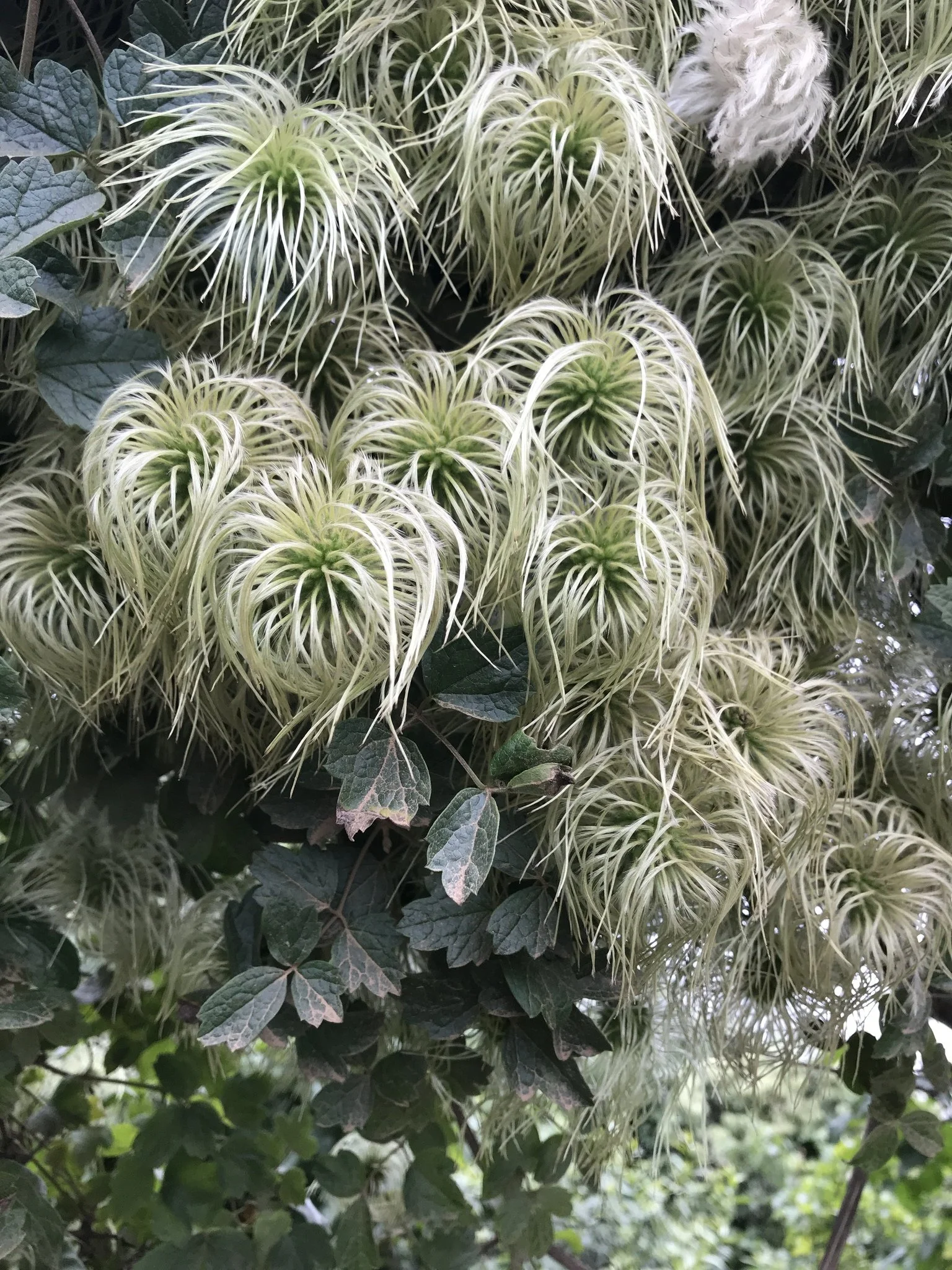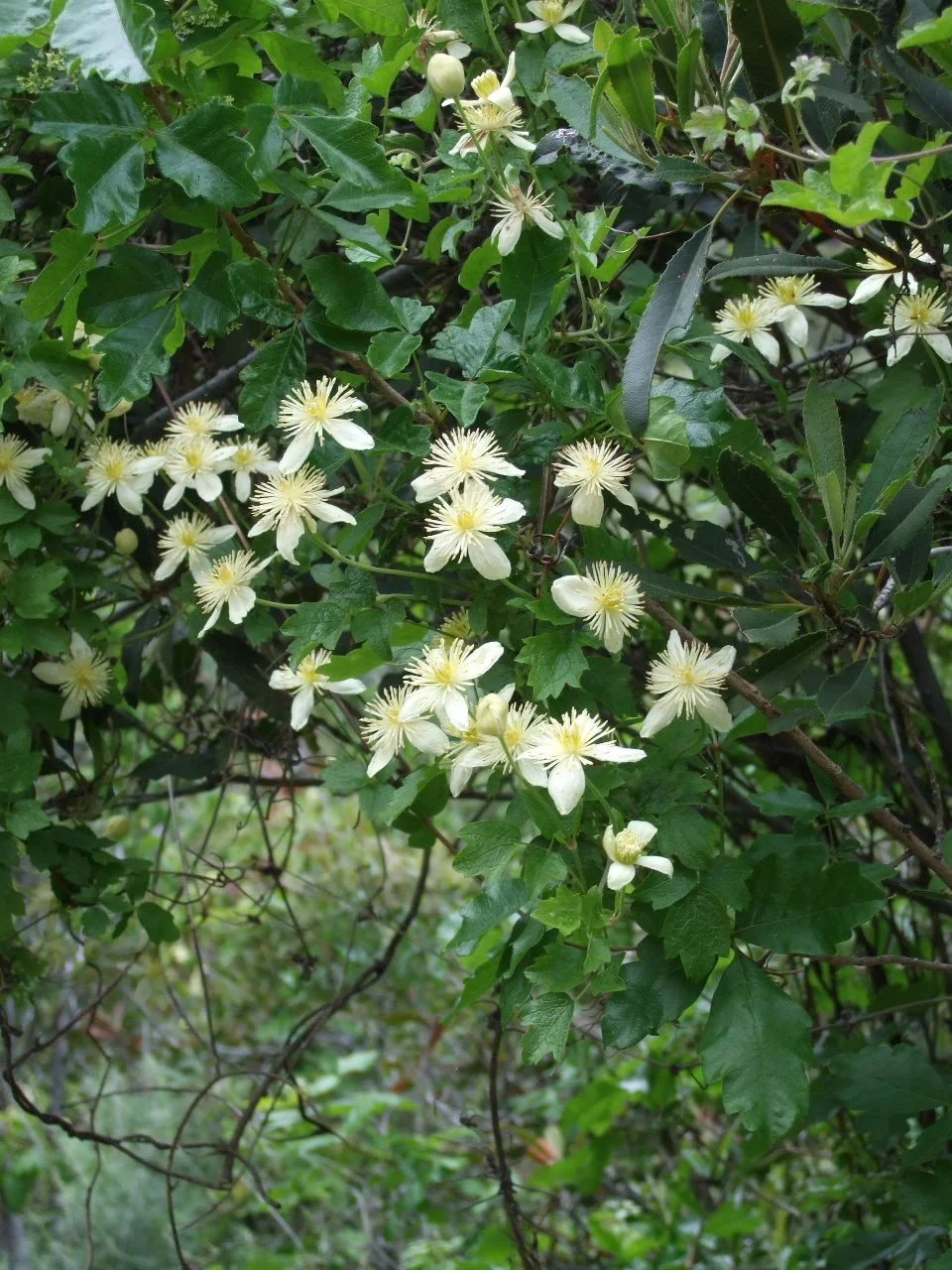Native Plant of the Month: Western White Clematis
Western white clematis (Clematis ligusticifolia)—also known as western virgin’s bower or yerba de chiva—is a showy vining plant in the buttercup family native to western North America. Its cream-colored flowers bloom in the summer, then give way to eye-catching fluffy seedheads in the fall. Often found along streambanks, this semi-woody deciduous vine is adaptable to a variety of soil types, including heavy soils with higher clay content. It is pollinated by bees and butterflies, and provides cover for birds and browse for deer. It is also useful for erosion control.
Growing Western White Clematis at Home
This plant prefers part sun to full shade, and likely needs supplemental water once or twice a week in the summer. Western white clematis can grow to be more than 20 feet tall, but because new flowers only bloom on new growth, you may wish to prune the vines back every few years to about a foot above the ground in late winter or early spring. If left to run wild, it can reach high into the canopy, with new growth covering the old woody growth from previous years. With nothing to climb on, it can spread along the ground.
Planting western white clematis near a tree or shrub will give it something to climb on. A few native plants, like osoberry, hillside gooseberry, and buckeyes, thrive in similar conditions and have a dormant period that overlaps with western white clematis’s flowering period, so planting them together can keep your garden green year round. Salal, ceanothus, coffeeberry, and huckleberry are evergreen natives that are also adapted to these conditions.
Cultural Uses
In California, the Washoe people of the Tahoe area use the wood to make bows. The Mahuna people of Southern California make an infusion to be used as a skin treatment. There are many more indigenous uses for the plant in and outside of California. It is also said that early settlers used the plant as a substitute for black pepper. Due to toxic compounds found in this genus, this plant is used in very small quantities. Clematis is also irritating to skin and mucous membranes and is poisonous when ingested by small animals.
*Note: Do not eat or utilize wild plants unless you have confidently identified the species, harvested according to relevant laws/permissions, and prepared them according to the proper protocols. We do not recommend eating clematis, and care should be taken when choosing where to plant it to avoid potential ingestion by pets, or unwanted contact with skin.
The fluffy white seed heads are arguably more beautiful than the flowers!
Clematis vines climb high up into the canopy.
Where to Find Western White Clematis and Other Native Plants
Western white clematis can be found widely across the western United States in wooded and riparian habitats, including in preserves we steward like Stulsaft Park in Redwood City and McClellan Ranch Preserve in Cupertino. Our nursery grows native plants like western white clematis using seeds and cuttings carefully sourced from local watersheds. See our latest inventory for online sales here:
By Natalie Jagoda, California Climate Action Corps Member





